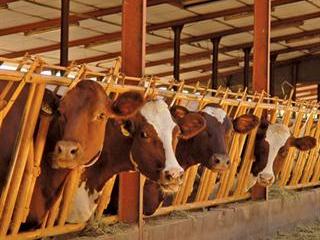
While the producer price plays a very important role in determining the profitability of dairy farming, it is not the only factor. The price of farm requisites actually plays as important a role as the producer price. The ratio between the producer price and the price farmers pay for the goods they use to produce milk, determines whether production is profitable or not.
Since mid-2009, milk producer prices have not increased at the same rate as the price of farm requisites. Milk producers have experienced constant pressure on the profitability of their operations. Internationally, the milk:feed price ratio is regarded as a good indicator of the level of dairy farm profitability. US farmers believe that they need a 2:1 or better milk:feed price ratio for profitable milk production.
In South Africa, a ratio of 1,5:1 is regarded as the break-even point. If the ratio stays below 1,5:1, production will decrease and if the ratio stays significantly above 1,5:1 for a long time, production will increase. Currently, the ratio is still below 1,5:1 and will have to improve substantially to encourage farmers to produce more.
The SA primary dairy sector has survived a few very difficult years. The global recession impacted on the demand for food internationally and in SA. Difficult demand conditions in SA resulted in very slow growth of dairy retail prices from 2008 to the end of 2011. Producer prices decreased and are barely higher than they were two years ago.
While producer and input prices are largely out of a farmer’s control, there are other factors that can be manipulated to improve profitability. Any measure boosting production with the same inputs or the same production with fewer inputs, will improve the farmer’s bottom line. Technical and economic efficiency is a prerequisite for profitable dairy farming. There are farmers who tend to spend too much time trying to increase their producer price and too little time on improving farm efficiency.
Outlook
Farmers who have survived the cost-price squeeze since 2008 can expect better conditions in 2012 and beyond. The fundamental factors that resulted in the increase in agricultural prices in 2008 are still present. Global population grows rapidly, global per capita consumption of dairy products is on the increase and emerging markets have fast rates of urbanisation and economic growth. All this translates to higher global dairy demand.
Globally, milk producers reacted to higher producer prices in 2010 and 2011 by increasing production. Milk production is estimated to have increased by more than 5% in major trading countries in 2011. Increased production did not influence international product prices much, as demand outstripped supply.
A recent Rabobank report predicts strong growth opportunities for dairy production in the next five years. While the fast demand growth will result in stable to higher product prices on international markets, farmers will have to battle to get a higher share of the increased gross income. According to Rabobank, input prices will increase at a faster rate than producer prices and will make it difficult for farmers to earn substantial profits.
While indicators point towards higher producer prices, global financial conditions are still uncertain and may impact negatively on the market in future. Uncertainty remains a key property of global markets and farmers must take this into account.
South African prospects
Higher world prices mean pressure on imports, which will benefit SA’s milk producers. The same factors that drive global demand are present in the South African market and in the Southern African market. Nielsen figures, supplied by the milk processor’s organisation Sampro, show annual growth of 5% and more for most dairy products. As societies grow more affluent, the demand for dairy products increases.
The growth of the local market and the African export market will provide opportunities for SA farmers. While we will see a substantial increase in dairy farm turnover, profitability will depend on the skill and management ability of the individual farmer.
The short-term outlook to spring is positive. Most milk processors have adjusted producer prices upwards. However, current price levels are not high enough to encourage the type of growth able to meet a 5% annual growth in dairy demand.



